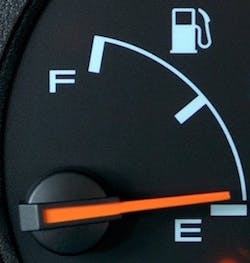A U.S. Environmental Protection Agency (EPA) report on corrosion inside diesel fuel underground storage tanks (USTs) found moderate or severe corrosion that could affect metal components inside steel and fiberglass systems.
Corrosion inside USTs can cause equipment failure by preventing proper operation of release detection and prevention equipment. If left unchecked, corrosion could cause UST system failures and releases.
Underground tank releases have historically been a leading cause of groundwater contamination. Groundwater is a source of drinking water for almost half of the people in the U.S.
EPA’s report shows that 35 of 42—or 83%—of the USTs studied exhibited moderate or severe corrosion, but less than 25% of owners were aware of corrosion prior to the internal inspection.
Although EPA cannot project the actual percentage of USTs storing diesel that are affected by corrosion nationwide, EPA is alerting owners of USTs storing diesel fuel about the risks of corrosion. EPA’s notification recommends owners check inside their tank systems and further investigate the condition of their diesel fuel tanks. Owners’ awareness and early actions could help protect them from higher repair costs and help protect the environment from contamination. EPA’s UST websiteprovides information on actions tank owners can take to minimize corrosion and associated risks.
As part of EPA’s ongoing collaboration with the UST community, EPA responded to concerns about reports of severe corrosion in USTs storing diesel fuel by working with industry and scientific experts to develop this research. The results will lead to a fuller understanding of the issue and its possible causes, as well as lay the groundwork for future research efforts to identify a solution.
Scientific evidence has not identified a specific cause of corrosion in diesel tanks, although microbiologically influenced corrosion is suspected to be involved. EPA is continuing to work collaboratively with partners in the UST community and industry and scientific experts on additional laboratory research.
For more information on underground storage tanks (USTs) and the report, visit www.epa.gov/ust.
For more information on corrosion in USTs storing diesel fuel, visit www.epa.gov/ust/alternative-fuels-and-underground-storage-tanks-usts#tab-5.
Source: U.S. Environmental Protection Agency


